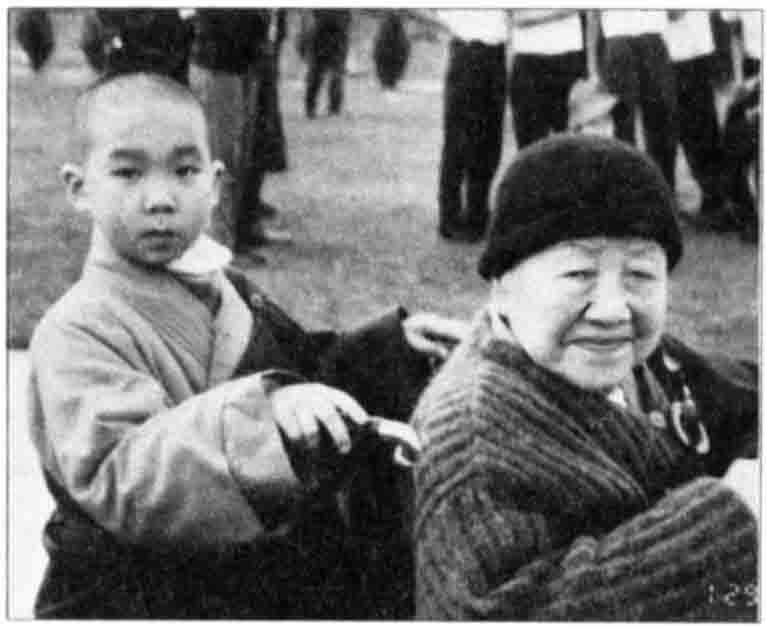 |
佛教不僅接受孝道,它更全盤融入在孝道的理論和實務當中,而且還加以發揚光大。
NOT ONLY DOES BUDDHISM ACCEPT FILIALITY, IT FULLY INTEGRATES IT INTO ITS TEACHING AND PRACTICE, AND ACTUALLY EXPANDS UPON IT. |
過去幾世紀以來,儒、佛兩家傳統,一直處在一種尷尬的處境中。當佛教最初傳入中國的時候,其中一點經常受到評議的,就是認為「佛教違逆孝道」。有什麼比出家、剃髮、又改名換姓更來得不孝呢?佛教真是那麼不孝嗎?當我們仔細研究佛教的經典後,就會發現,佛教不僅接受孝道,它更全盤融入在孝道的理論和實務當中,而且還加以發揚光大。在不違逆儒家禮俗的情形下,佛教所樹立自成一格的孝道典範,將道德具體地表現出來,並成為後世的楷模。儘管有些人認為這種作法是為了逃避儒家的抨擊,但是很顯然的,佛教,尤其是在中國,賦予了孝道這項美德一個崇高的地位。
因為孝道似乎與道德觀有直接的關係,所以用戒律在佛教中所扮演的角色,做為我們討論的開場白,相信會很有幫助。許多教外人士仍然認為佛教專講打坐而已,這真是天大的誤會。他們不知道佛教所探討的,其實是生命的過程,也就是道。因為道德和正當的言論是直接植入佛教的修行當中。正如小乘法師Hammalawa Saddhatissa 所言,持戒為道之始——一條築向涅槃的不間斷的道。這是佛教傳統的基本明訓。佛陀開示他早期的弟子,佛教初學的重點,就是要在縱情和禁欲之間取個中道,並將這理論歸納為「八正道」:正見,正思惟,正語,正業,正命,正精進,正念和正定。中間的三項,通常可合併為尸羅,即戒律,並與其他五項交互運用。尸羅的內容有下列幾種:在家居士戒,出家戒,和菩薩戒。這些戒律,明確地指出構成可以進化我們性靈的良好行為標準。因此,佛教很顯然的,從一開始即是以道德為根本。
戒律所直接強調的重點,就是孝道這項敬老尊賢的美德。我們不必多加思考,就知道用正確的態度來對待父母、祖先和親人,就是一種道德的表現。佛陀和他的信徒,將之視為人性的一部份,並透過方便法,延用至其他生靈的身上。對於這一點,我們可能抱持著不同的看法;這不純粹只是「中國才有的東西」。在佛陀的許多論述當中,顯示出他所奉持的孝道,並沒有中國的色彩。比如說,在Sigala經中,世尊指示在家的弟子說,父母是神聖的,在孩子的眼中,他們的地位是高過於一切的。所有跡象都顯示,孝道在南亞地區,是一切道德的基礎,甚至在有佛教之前就是這樣了。所以佛教傳入中國時,已經為孝道奠定穩固的基礎。只不過中國人特別推崇這樣的理念,並將它擴展到整個宇宙中。
待續 |
|
Over the centuries in China and throughout East Asia, the Confucian and Buddhist traditions have had an uneasy relationship. When Buddhism first began making inroads into China, one of the stock criticisms leveled against it was that it was contrary to filial piety (xiao). After all, what could be more unfilial than leaving home, shaving one's head, and taking on a new name? But is it the case that Buddhism really is unfilial? When we take a close look at some of the tradition's own texts it becomes evident that not only does Buddhism accept filiality, it fully integrates it into its teaching and practice, and actually expands upon it. Furthermore, in accordance with typical “Confucian” practice, Buddhism has its own filial paragons who embody virtue and serve as models for later generations. Though some may say these developments came about only in response to Confucian criticisms, the bulk of the evidence argues otherwise. Buddhism grants a high position to the virtue of filial respect, a position which becomes particularly prominent when the Dharma establishes itself in China.
It may be helpful to begin our discussion with the role of morality (sila) in Buddhism, since filiality, as a virtue, is directly related to moral teachings. Many non-Buddhists still think that Buddhism is just “meditation” rather than an integrated way of life, a marga or dao. This is a gross misconception, however, for morality and correct action are built directly into Buddhist practice. As the Theravadin master Hammalawa Saddhatissa notes, the simple practice of morality is the beginning of the path--a path which constitutes an unbroken progression towards nirvana. This is set out explicitly in what is held to be the Buddha's first sermon, the Dharmacakravartin Sutra, found in the Samutta Nikaya. Here the Buddha addresses his first disciples on the beginning of practice centered around a “middle way” between the extremes of self-indulgence and self-mortification. He sums this up as the “Noble Eight-fold Path”: right view, right thought, right speech, right action, right livelihood, right effort, right mindfulness, right concentration. The middle three components are often grouped together as sila, and are thoroughly interwoven with the other components. Observance of sila includes following various precepts (lay, monastic, Bodhisattva) which further define correct behavior conducive to spiritual progress. Thus, ethical concerns are fundamental to Buddhism, and have been since its very beginning.
Filiality, the virtue of proper respect and service to one's elders, is really part and parcel of this emphasis on sila. Indeed, even casual reflection shows that ethical action necessarily includes proper behavior towards parents, ancestors, and other relatives. We might even venture that the Buddha and his followers recognized the roots of filial affection and behavior as part of “human nature” and, through “skillful means” (upaya), expanded it to all beings. At the very least, filiality is not a concern only for Chinese Buddhists; there are many discourses evincing no Chinese influence in which the Buddha espouses filial piety. For instance, in the Sigala-Sutta, wherein the Blessed One directs advice to the laity, he teaches that parents are to be considered sacred, the highest of all beings to their children. There is also the popular Sama Jataka tale, in which the Buddha preaches the Mataposata Sutta to a young monk who supports his parents with alms and gifts obtained from lay supporters. The Buddha defends this monk from those accusing him of violating the Vinaya rules by saying that in a previous life, he (the Buddha) did the same. In truth, all indications are that obligations of filiality formed the foundation of virtue in South Asia even in pre-Buddhist times. As Gregory Schopen points out, this preoccupation with filial concerns is confirmed by the archaeological record in the countless inscriptions at Buddhist holy sites throughout Indian territories. Filiality, then, was already a strong presence in Buddhism when it entered China. It is just that in China such notions come to the fore and grow to truly cosmic dimensions.
To be continued |